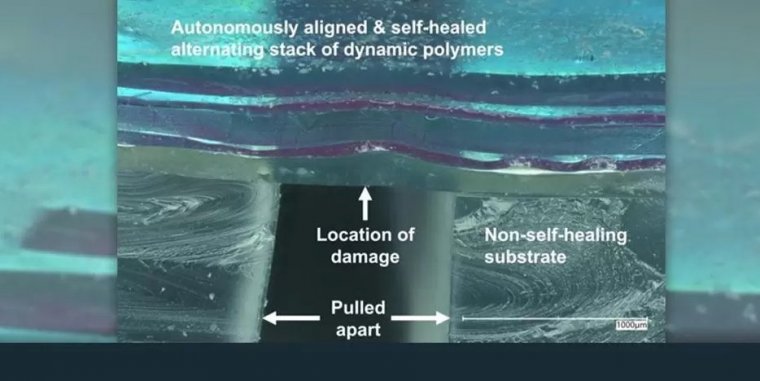| News / Science News |
Layers of self-healing electronic skin realign autonomously when cut
Human skin is amazing. It senses temperature, pressure and texture. It's able to stretch and spring back, time and again. And it provides a barrier between the body and bad things in the world — bacteria, viruses, toxins, ultraviolet radiation and more. Not the least of which is skin's remarkable ability to heal.

A digital microscope photograph of polymer films that have been damaged, autonomously aligned and self-healed. Photo: Bao Group/Stanford University
"We've achieved what we believe to be the first demonstration of a multilayer, thin-film sensor that automatically realigns during healing," said Chris Cooper at Stanford University who, along with researcher Sam Root, is co-author of the study.
"This is a critical step toward mimicking human skin, which has multiple layers that all reassemble correctly during the healing process."
Layering is critical to mimicking skin's many qualities. "It is soft and stretchable, but if you puncture it, slice it or cut it, each layer will heal with itself to restore the overall function," Root says. "Just like real skin."
The team, led by Zhenan Bao at Stanford University, might be able to create multitiered synthetic skin with individually functional layers as thin as a micron each, perhaps less. Thin enough that a stack of 10 or more layers would be no thicker than a sheet of paper.
"One layer might sense pressure, another temperature, and yet another tension," says Root. The material of different layers can be engineered to sense thermal, mechanical or electrical changes.
What sets the current work apart is that the layers self-recognize and align with like layers during the healing process, restoring functionality layer by layer as they heal. (U.S. National Science Foundation)
YOU MAY ALSO LIKE





